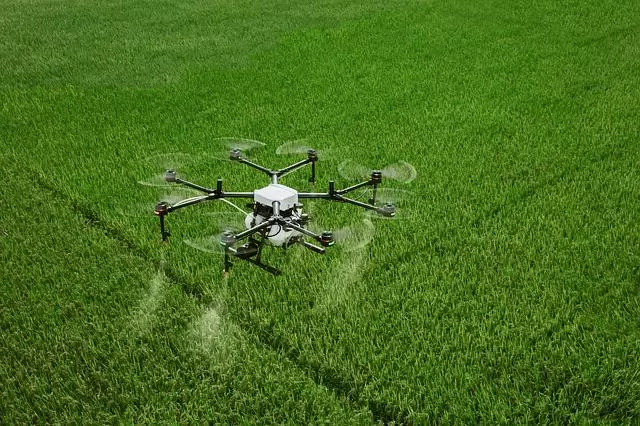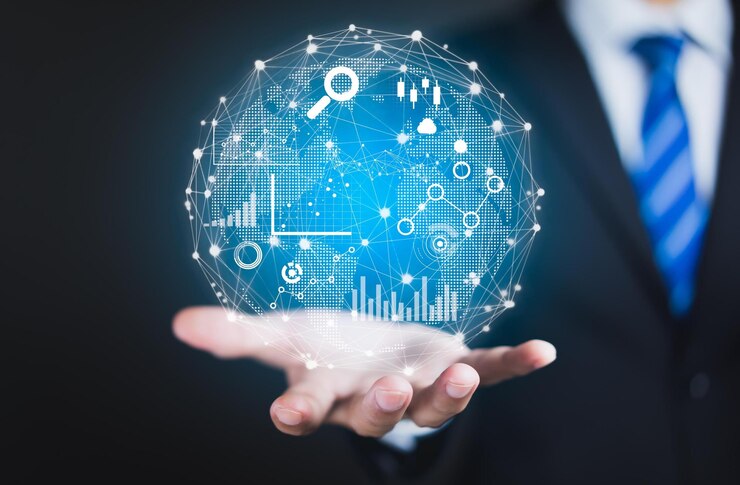Drones, or unmanned aerial vehicles (UAVs), have revolutionized various industries, and agriculture is no exception. Their ability to capture aerial data efficiently and cost-effectively has transformed farming practices worldwide.
Drones have emerged as indispensable tools, reshaping traditional farming practices with their aerial capabilities and data-driven insights. These unmanned aerial vehicles (UAVs) have revolutionized how farmers monitor crops, manage resources, and make critical decisions to optimize yields and sustainability.
The integration of drones into agriculture represents a leap forward in precision agriculture, offering farmers unprecedented capabilities in gathering real-time data and actionable insights. By equipping drones with advanced sensors and imaging technologies, farmers can obtain high-resolution aerial imagery of their fields, enabling detailed analyses of crop health, soil conditions, and water distribution.
This blog explores the diverse applications of drones in agriculture, highlighting their impact on crop management, productivity, and sustainability.
Here Are The 7 Applications of Drones in Agriculture
1. Precision Agriculture
One of the primary applications of drones in agriculture is precision agriculture. Drones equipped with high-resolution cameras and sensors can capture detailed aerial imagery of farmland. This data is analyzed to create precise maps of crop health, soil variations, and irrigation needs. Farmers can then make informed decisions regarding seed planting, fertilizer application, and pest management, optimizing yields while minimizing resource use.
2. Crop Monitoring and Management
Drones enable real-time monitoring of crop health and growth throughout the growing season. By flying over fields at regular intervals, drones provide farmers with up-to-date information on plant health, identifying early signs of stress, disease, or nutrient deficiencies. This proactive approach allows for timely interventions, such as targeted spraying of pesticides or adjusting irrigation levels, to maintain crop health and maximize yields.
3. Soil Analysis and Mapping
Agricultural drones equipped with advanced sensors can perform soil analysis with precision. They collect data on soil moisture levels, pH balance, and nutrient content across large areas of farmland. This information helps farmers create detailed soil maps and implement site-specific soil management practices. By optimizing soil conditions, farmers can improve crop productivity and reduce environmental impact.
4. Irrigation Management
Drones play a crucial role in optimizing irrigation management. By monitoring soil moisture levels and assessing crop water stress from above, drones help farmers determine when and where irrigation is needed most. This targeted approach ensures efficient water usage, reduces water wastage, and promotes sustainable farming practices.
5. Crop Spraying and Pest Control
Drones equipped with spraying systems offer a precise and efficient method for applying fertilizers, herbicides, and pesticides to crops. Unlike traditional ground-based spraying methods, drones can navigate challenging terrain and apply chemicals evenly over large areas. This targeted approach minimizes chemical use, reduces labor costs, and mitigates environmental impact, while effectively controlling pests and weeds.
6. Livestock Monitoring
Beyond crop management, drones are increasingly used for livestock monitoring in agriculture. Custom agriculture drone software development provides aerial surveillance of livestock, helping farmers track herd movement, monitor grazing patterns, and identify potential predators or health issues. This real-time monitoring improves animal welfare, enhances pasture management practices, and boosts overall farm productivity.
7. Disaster Management and Damage Assessment
In times of natural disasters such as floods, wildfires, or storms, drones assist farmers in assessing damage to crops and infrastructure quickly and safely. They capture aerial images of affected areas, enabling farmers to evaluate the extent of the damage, prioritize response efforts, and expedite insurance claims processes. This rapid assessment capability is crucial for minimizing losses and facilitating recovery.
Conclusion
Drones have transformed agriculture by providing farmers with powerful tools for precision farming, resource management, and operational efficiency. From precision agriculture and crop monitoring to soil analysis and disaster management, the applications of drones in agriculture are vast and diverse.
As technology continues to advance, drones will play an increasingly integral role in sustainable agriculture practices, driving innovation and productivity in the global food supply chain. For agriculture businesses looking to harness these benefits, Consider to hire Node.js developer can ensure robust software solutions tailored to integrate drone data seamlessly into agricultural operations.



